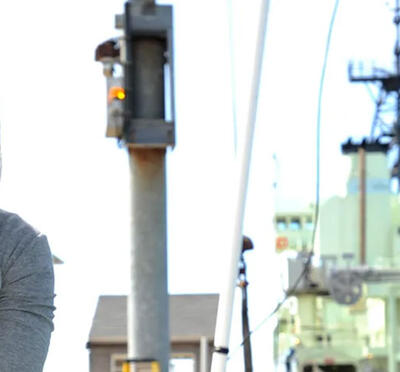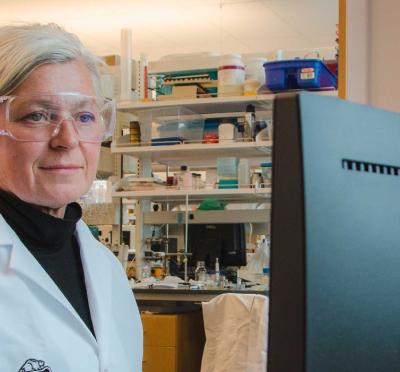Mark Bransom, CEO of Klamath River Renewal Corp., delivered the third Dean’s Distinguished Lecture to a rapt audience on May 21 at the LaSells Stewart Center. The occasion, which was tied thematically to the Clean Water Showcase the following day, served as a celebration of sorts for the monumental effort Bransom led in KRRC’s removal of four of the six dams along the Klamath River, the largest dam-removal project in U.S. history.
Removal of the Klamath Dams

"It takes a good engineer to build a dam, but it takes a great engineer to remove a dam".
Bransom, Ph.D. civil and environmental engineering ’97, shared the history of the Klamath dams, including their physical characteristics, their usefulness in generating electricity, and their deep economic, environmental, and societal impacts. He then outlined the major reasons why people in the Klamath region have been calling for decades to have the dams removed: free fish passage and improved water quality.
Bransom then walked the audience through the long, slow process of obtaining approval to get four of the dams removed, a process fraught with as many twists and turns as the Klamath itself.
Equally challenging was integrating input from dozens of stakeholder groups, including government agencies, area residents, local businesses, outdoor recreationists, environmentalists, and the tribes that inhabit the region.
With the last of the dams decommissioned by the end of the summer, Bransom said the next phase involves removing 1.5 million cubic yards of earth material, almost 1 million cubic yards of concrete, and 25,000 tons of steel. The final phase will focus on restoration, including planting 19 billion seeds from more than 100 species.
Lessons Learned from the Dam Removals
Bransom concluded his lecture with a look back at lessons learned from the enormous undertaking.
“What does it all come down to?” he asked. “More than 30 years in this business working around hydroelectric facilities, water resources, engineering, and planning and habitat restoration work. It comes down to people, how we show up, how we treat one another, and how we communicate.
It comes down to how we think about success and how we think about integrating our goals and their goals.”
The event wrapped up with a panel featuring Bransom, David Baker, director of Oregon State Productions, Mike Belchik, senior fisheries biologist, Yurok Tribe, and Desirée Tullos, professor of water resources engineering.
In case you missed it, the Dean’s Distinguished Lecture and panel discussion can be viewed here.



